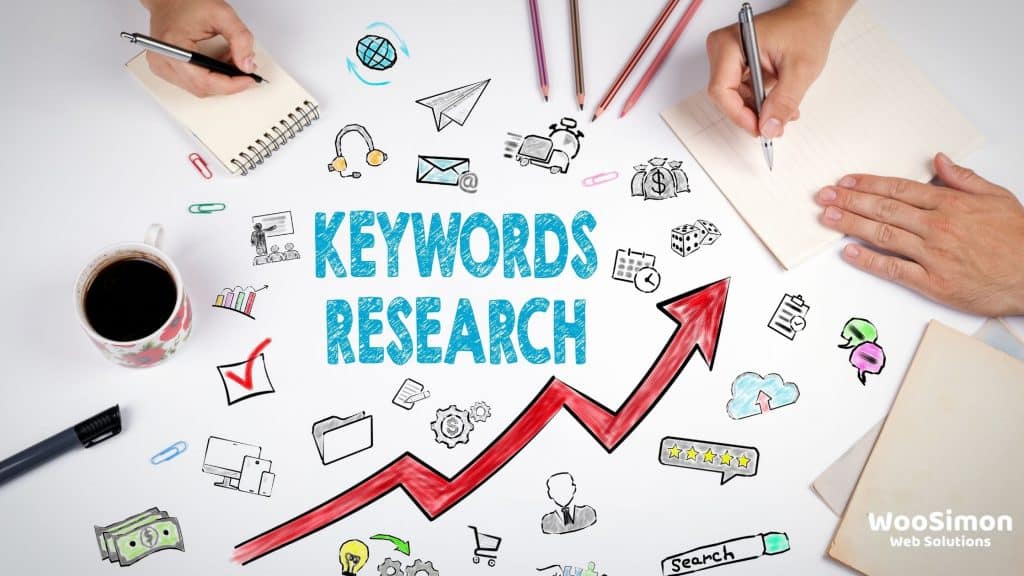How to get your first visitors to your new website
So your sparkly new website is now live, hooray!
After a few days, you check your stats and see you’ve had a whopping 3 visitors 🥲
Building and launching a website is just the first step. Now the real work starts!
In this post, we’re going to look at the main ways to drive traffic to your website.
More importantly, we’re going to focus on how to generate the right kind of traffic.
Visitors that will:
- Stay on your website, not “bounce” straight off as it’s not really of interest.
- Convert into paying clients. That is the reason you want visitors in the first place!
Organic Search
Organic Search is the Holy Grail, the Mutt’s Nuts, the Cat’s Cream.
Organic Search means someone has typed a question into Google and your website has shown up in the results.
What’s so good about Organic Visits? They’re completely free!
The pages that show up in the Organic Search Results are usually there because they deserve it. The Google algorithm takes into account a huge range of factors to serve up high-quality content that meets the user’s search needs.
What’s the catch?
It takes time, hard work and dedication.
Exactly how much effort you’ll need to put in, and how long it will take to see results will vary greatly depending upon your niche and your competition. The more unique your website is, the easier it will be for you to start seeing results.
Going Viral
Sharing is the new word of mouth.
People are more likely to click on a link and become a customer when it’s been shared by a friend than if they see it in an advert.
The really great thing about sharing is that it has the potential to go viral. If someone loves your website and shares it with two friends, who in turn each share your page with two more friends, your page views can grow faster than you can say Omicron!
As with getting into the search results, getting your website to go viral is not typically a quick and easy process.
Again, it is critical that you have high-quality content and/or a really great product or service.
Providing that is the case, however, there are a few things you can do to help encourage visitors to share your page.
Make it easy and obvious
Sometimes people just need a little nudge or reminder.
Make sure you have prominent share buttons on your page.
- At the bottom of the page
This is a sensible place. The reader has made it to the end of your content, which hopefully means they enjoyed it and so should be happy to share. - At the top of the page
A surprising (worrying?) number of people will share a post or page after only reading the title! - In line options
Like this one here – go on, give it a try!
Reward (aka Bribe) People
If you follow all of the above tips, you will definitely get a few shares from your fans.
If you really want to motivate people to shout about your brand from the virtual rooftops, however, you’re going to have to give them something back in return.
Referral links are special links that track where your incoming visitors are coming from and pay a reward to the person that shared it
This could be a fixed fee per visit, a percentage of sales made via the link, or some other form of reward to credit.
Adverts
Paid advertising is a fast, affordable and effective way to quickly get your website seen by your target audience. Providing you do it correctly of course…
The good news is that compared to traditional modes of advertising, digital adverts are much cheaper and more effective.
You can target your campaigns to only show to your ideal demographics, and get detailed analytics which over time will enable you to hone your ads to make them even more effective.
For a small business or new startup, you can start digital advertising with a budget of as little as €5, and often even get some free credit for your first campaign!
The two big players in the digital ad world are Google and Facebook. If you’re just getting started I’d recommend starting out with one or both of these.
Both platforms will walk you through setting up your first ad campaign, though there are some key basics you should be aware of first:
Display Network vs Search Advertising
Depending on who you ask, you may be told there are many more different types of digital ads.
Really though, they’re just breaking down Display Network type ads into smaller, more distinct categories.
They are right to do this, and at some point, you’ll want to learn the nitty-gritty, but for now let’s just start with the two major categories:
Search vs Display.
Search Advertising or Paid Search involves paying Google (or Bing or another search engine of your choice) to show your page at the top of the results. As mentioned at the start of this article, organic search is the holy grail, but it takes time and effort. If you’ve got a suitcase full of cash you can cut to the front of the queue.
Display Network Advertising is the catch-all term for any ads you see elsewhere on the web when you’re not doing a search. Those annoying banner ads, pop-ups, sponsored content and so. Much of it is very badly done, simply an annoyance to be tolerated in exchange for free content. When done well, however, you may not even realise you’re viewing ads (or “sponsored content”). Highly targeted, specific, and well-tailored content seamlessly woven into someone’s feed is typically called “Native Advertising”.
Which one is right for your business will depend on your product or service and target audience. Are people already searching for your solution? Then maybe paid search is a good option. Is your concept so new no one is searching for it yet, but you know exactly the type of person who’d love and benefit from it? Then probably display ads are the way to go.
Pay Per Click vs Cost Per Impression
Pay per click or PPC means you only pay for your ad if someone clicks on it.
Your ads could be shown 1000s of times, but you won’t pay for any of these impressions unless someone is actually interested and clicks through on the ad to visit your website.
Pros of PPC
- You only pay for interested leads
- Easy to measure results
- You get some free exposure
Cons of PPC
- Can be expensive – especially if there is high competition for the keywords
- The same potential customers may end up clicking on the ad serveral times
Cost per impression or CPM means you pay a fixed fee based on the number of times your ad is shown.
CPM = Cost per 1000 impressions (M is the roman numeral for 1000). You’ll pay the same fixed amount whether you get 1000 clicks or 0.
Pros of CPM
- Fixed, predictable costs
- Guaranteed exposure
- Good for generating brand awareness
Cons of CPM
- Can be hard to measure the results
- ROI can vary greatly depending on the traffic on the sites where the ads are shown
Where to start with digital ads?
I’d recommend starting with:
- A Paid Search Campaign with Google Ads using CPC.
Create a free account and follow their guide for new users. - A Display Network Campaign with Facebook Ads using CPM.
Again, create a free account and follow their guide for new users.
SUMMARY
Launching your website is just the first step.
Getting your first visitors requires some time, hard work, and perhaps even splashing a little cash.
The 4 main ways to get more traffic to your page are:
- ORGANIC SEARCH
- GOING VIRAL
- PAID REFERRALS
- PAID ADVERTISING
You don’t necessarily have to do all of them, but you do have to do something.
Unfortunately “If you build it, they will come” only applies to magical baseball stadiums…
The article How to get your first visitors to your new website first appeared on woosimon.com



